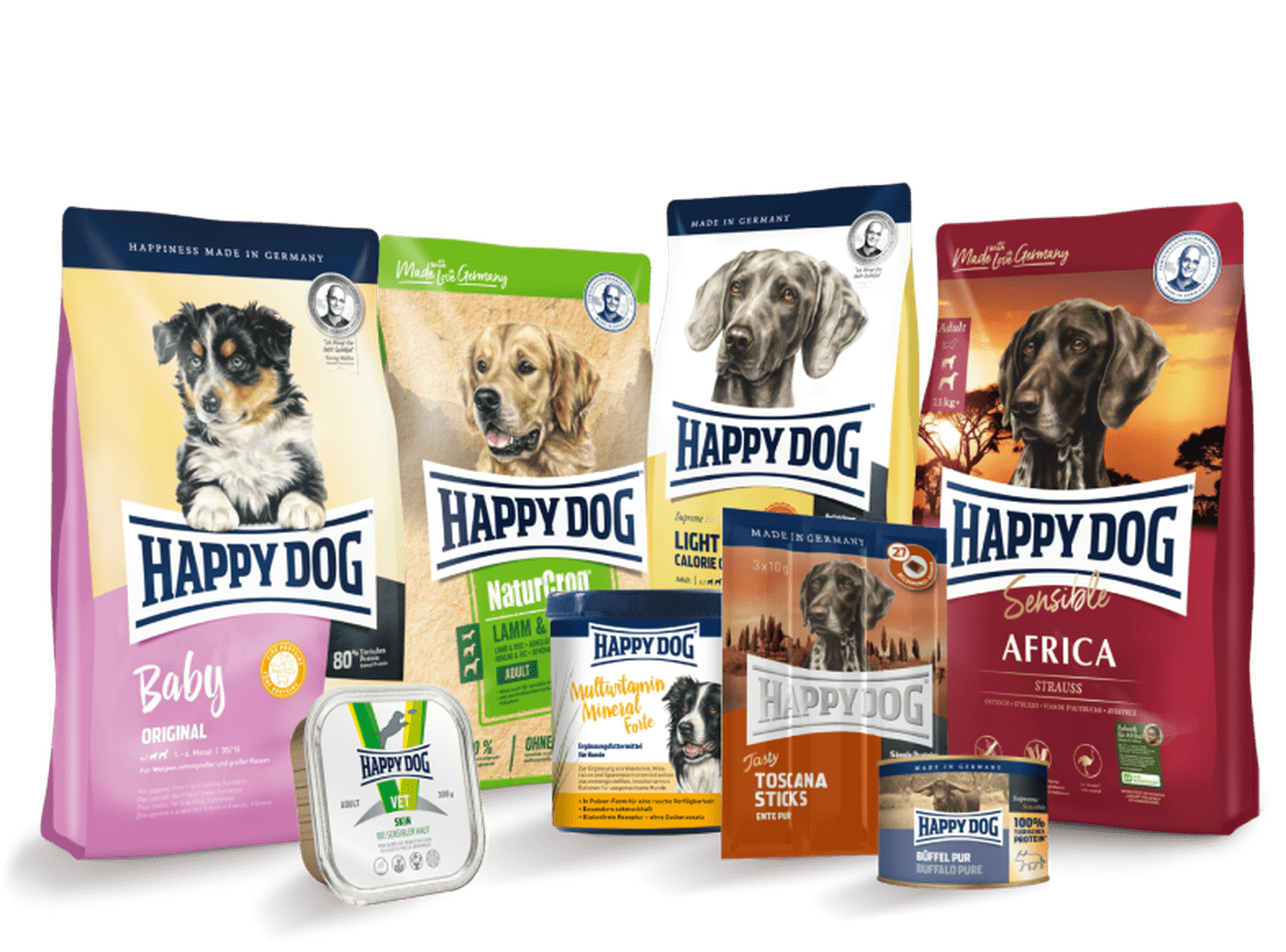
Why Does Every Dog Seem Allergic These Days?
Share
Unpacking the modern allergy epidemic
Are you constantly battling itchy skin, upset tummies, or recurring ear infections with your dog? You’re not alone — more owners than ever are looking for hypoallergenic dog food to ease skin and digestion issues. But is there really an “allergy epidemic,” or are we just learning to recognise what’s been there all along?
At Happy Dog UK, we combine insights from canine nutrition, biology, and behaviour to explore what’s really behind the rise in food sensitivities — and how choosing novel protein dog food or a carefully selected single protein dog food can make all the difference.
1. The gut microbiome and the processed diet shift
The processed paradigm
For thousands of years, dogs’ ancestors ate fresh, whole foods. The shift to modern, highly processed kibble has changed how their digestive systems function. While convenient and nutritionally balanced, high-heat processing can alter natural proteins and enzymes, reducing the diversity of beneficial gut bacteria.
Reduced microbial diversity
A healthy gut microbiome helps regulate the immune system. When that diversity is lost — often through over-processing or repeated exposure to the same ingredients — the gut barrier can weaken, allowing undigested food particles into the bloodstream. This can trigger chronic inflammation and allergic reactions, often seen as itchy skin or digestive upset. Rotating suitable single protein dog food or moving to novel protein dog food can help reduce reactivity.
The carbohydrate load
Many standard kibbles rely heavily on wheat, rice, or maize. While not harmful for most dogs, a consistently high load of these carbohydrates can sometimes upset the gut balance in sensitive dogs — especially those already prone to inflammation or skin issues. A balanced hypoallergenic dog food can be a useful option here.
2. The hygiene hypothesis and environmental factors
Overly clean environments
Just as in humans, dogs today are exposed to far fewer microbes early in life. The hygiene hypothesis suggests that this lack of microbial challenge leaves the immune system under-stimulated — and later, it overreacts to harmless substances like pollen, dust, or certain food proteins. Supporting gut health with hypoallergenic dog food may reduce flare-ups.
Hidden chemical exposure
Modern homes are filled with potential irritants — cleaning sprays, air fresheners, lawn chemicals, and even flame retardants in furniture. Reducing exposure alongside a simple single protein dog food can lower the overall trigger load.
3. Genetics, breeding, and better diagnostics
Breed predispositions
Certain breeds, like West Highland Terriers, French Bulldogs, Labradors, and Cocker Spaniels, are genetically more prone to allergies and atopy. Feeding limited ingredient options such as single protein dog food can help manage those sensitivities.
Better veterinary awareness
Veterinary medicine has advanced enormously. What used to be seen as “just itchy skin” is now diagnosed as food intolerance, inflammatory bowel disease, or environmental allergy. Many vets will start with an elimination trial using novel protein dog food or a single protein dog food to pinpoint triggers.
4. Raw feeding — Benefits vs Cons
Benefits
- Less processing; proteins closer to natural form — may aid digestibility for some dogs.
- Precise ingredient control for strict elimination diets and single protein plans.
- Potentially richer microbial exposure supporting gut diversity.
Cons
- Hygiene risks; strict handling and storage needed.
- Must meet FEDIAF/AAFCO standards for long-term health (iodine, calcium, omega-3s, etc.).
- Higher effort and cost to plan and supplement correctly compared with complete hypoallergenic dog food.
5. High-quality kibble: the modern solution
Not all kibble is created equal. At Happy Dog, we’ve taken the science of allergies and built diets specifically for sensitive dogs — using novel proteins, gentle processing, and easily digestible recipes that support skin and gut health. This is the foundation of our hypoallergenic dog food approach.
Our Rare Protein Range features exclusive sources such as Ostrich, Kangaroo, Goat, and Horse — proteins your dog is less likely to have encountered before, reducing the risk of reactions and providing true single protein dog food options.
We also offer Grain-Free Diets for dogs with grain sensitivities and Wet Food Options for those who prefer a softer texture or have dental or digestive concerns.
Each recipe is formulated to FEDIAF standards, meaning it’s nutritionally complete, balanced, and suitable for long-term feeding — giving your dog the health benefits of a carefully managed diet without the guesswork.
The takeaway: it’s about balance, not blame
There’s no single cause behind today’s canine allergy epidemic. It’s a combination of modern diets, environmental changes, genetic predisposition, and better diagnostics.
The right approach is to work with your vet to identify triggers and choose a food that is highly digestible, balanced, and free from common allergens. For many dogs, that means a novel protein dog food or a simple single protein dog food to keep ingredients clear and consistent.
Not sure where to start? Try a free sample and see how your dog responds.
Get your free trial pack


